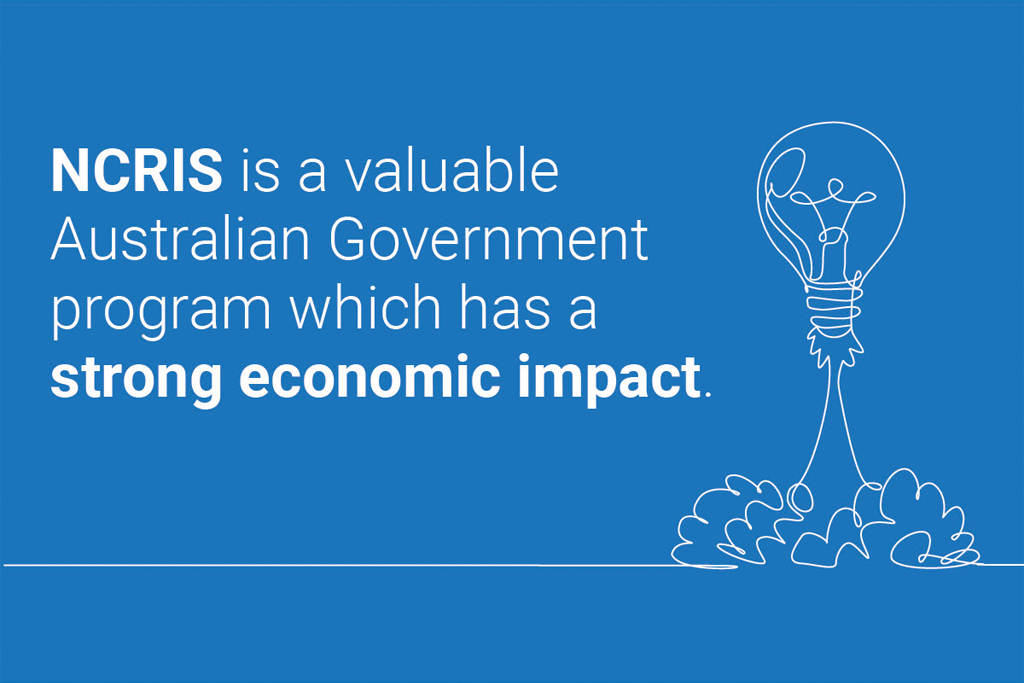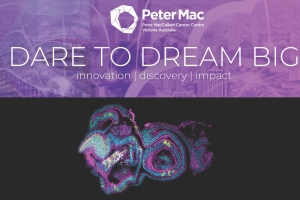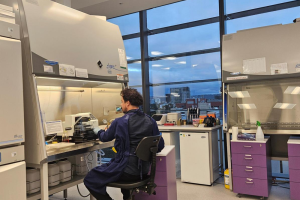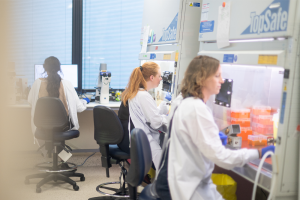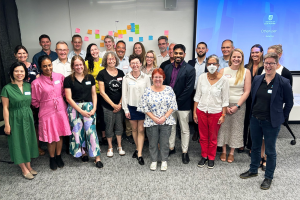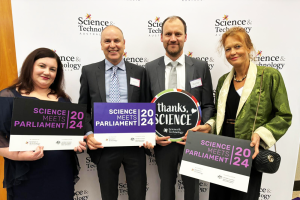Phenomics Australia, an NCRIS member
Australian science continues to make national and international headlines, most recently focussing on the COVID-19 pandemic and the 2019 – 2020 Australian bushfires. Behind these headlines, you will find a community of impassioned researchers. And behind them, you will find a network of research enablers from NCRIS, the National Collaborative Research Infrastructure Strategy. Since 2004, NCRIS has enabled a wealth of research excellence, making it both headline worthy and a critical pillar of the Australian economy. Leading economists agree.
Powerful economic findings
Recently, a number of research infrastructure organisations from the NCRIS community commissioned Lateral Economics (LE) to assess the positive impacts of NCRIS for Australian society and the environment. LE’s report has identified ways in which NCRIS funding has and will continue to support the Australian community and economy.
The report found that the direct benefit of investment in NCRIS is calculated to be above a $7 return for every $1 invested, which is a return on investment (ROI) of 7.5:1. The report notes that by 2022-23 the investment could support the employment of an additional 1,750 scientific and technical staff, support staff, and supply chain and industry staff -. These benefits along with others outlined in the report indicate the significant impact NCRIS has made on Australia’s economic security.
National Collaborative Research Infrastructure (NCRIS) spending and economic growth by Lateral Economics, 2021.
The report concludes:
‘Based on economic theory and evidence from the time of the GFC to present, we can think of few approaches to providing additional stimulus to the Australian economy that are more cost effective than increasing investment in NCRIS.’
NCRIS delivers
The impact of NCRIS is clear, however, the program itself is not often centre stage. It is time now to shine a light on NCRIS. From supercomputers and microscopes, to data collection and software platforms NCRIS provides the infrastructure that supports Australia’s scientists.
The result is a network of world-class research facilities that are driving innovation and research in Australia and internationally. This network is made up of 22 NCRIS projects, which link over 200 institutions employing more than 1,900 highly skilled researchers and technical experts. This interconnected infrastructure and the specialist teams who run NCRIS programs allow Australia to meet the key challenges outlined in the UN sustainability goals and tackle some of the biggest scientific and societal challenges we face today.
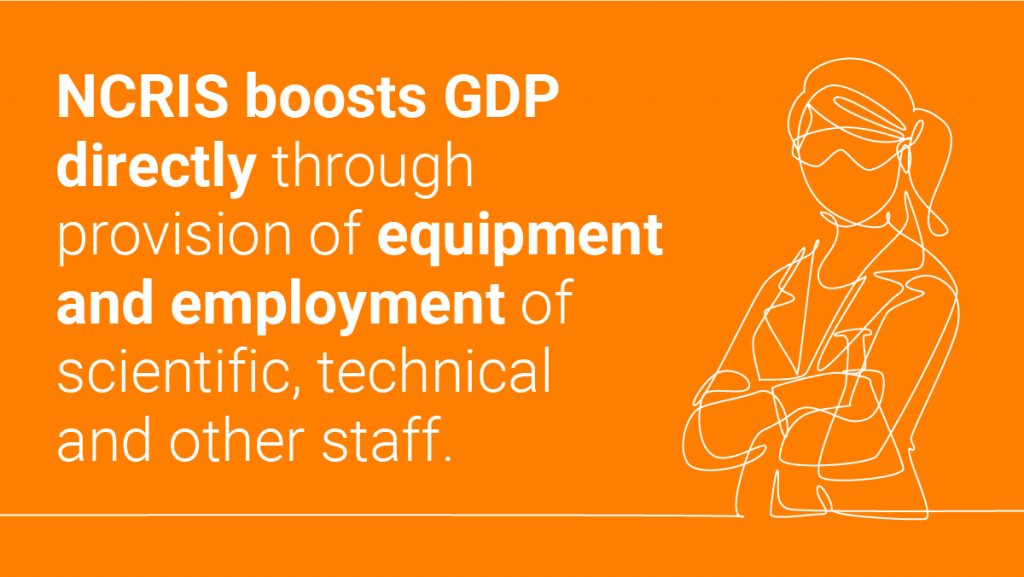
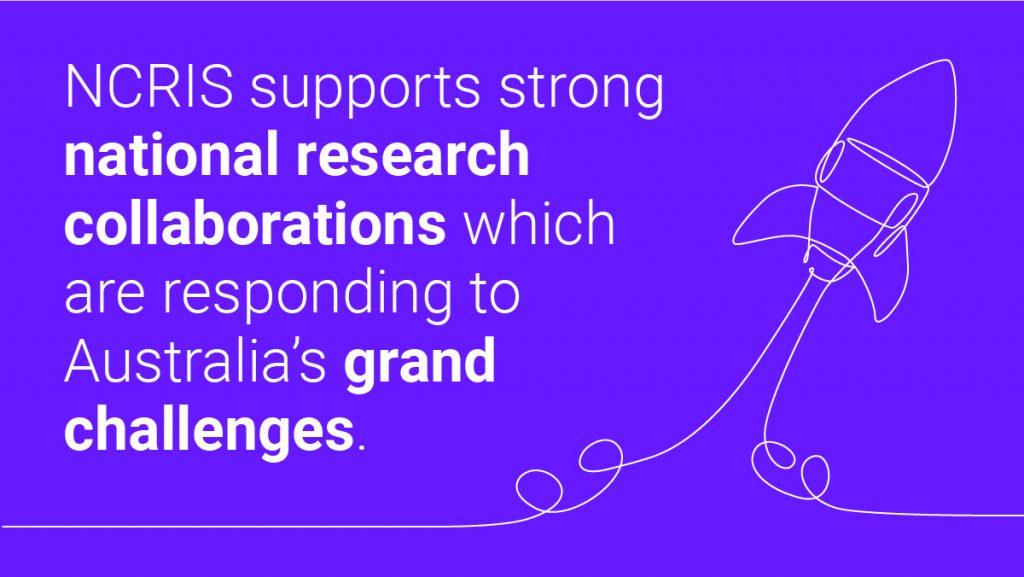
These have been highlighted in the Lateral Economics report as:
Cyclone warnings. IMOS is providing rich, high frequency data from Australia’s surrounding oceans which can provide early warning signs of cyclones, not to mention ocean acidification and sea level rise associated with climate change.
Population health. A range of NCRIS facilities (e.g., PHRN, Phenomics Australia, Bioplatforms Australia, Therapeutic Innovation Australia) are helping to improve the health of Australia’s population.
Understanding the building blocks of reality. NCRIS facilities such as Microscopy Australia, National Imaging Facility, ANSTO, and Astronomy Australia are contributing to world leading research on the building blocks of the universe and of life.
Monitoring biodiversity. Australia’s unique biodiversity is being monitored, described and protected by the Atlas of Living Australia (ALA), BioPlatforms Australia, IMOS and TERN. In particular, ALA is our national biodiversity data infrastructure. It integrates and delivers fundamental data on Australia’s plants, animals and fungi to support ecosystem assessment, monitoring and planning.
Boosting crop yields and resilience. The Australian Plant Phenomics Facility contributes fundamental services in the effort to improve crop yields and crop resilience with genomic and molecular characterisation performed through Bioplatforms Australia.
Deriving value from data. ARDC, Pawsey Supercomputing Centre and the National Computational Infrastructure enable data from many fields of research across a wide range of scales to be stored, curated, managed and analysed.
Understanding the earth. AuScope improves our understanding of fundamental earth science and enables a range of benefits including substantial reductions in the cost of and more effective resource exploration.
Advanced manufacturing. The Australian National Fabrication Facility (ANFF) and Therapeutic Innovation Australian (TIA) provide industry and the wider community with access to cutting-edge advanced manufacturing technologies. Furthermore, NCRIS organisations such as Astronomy Australia are involved in advanced manufacturing activities.
Selected examples of major benefits of NCRIS-supported infrastructure to the Australian community from the National Collaborative Research Infrastructure (NCRIS) spending and economic growth report, June 2021
Why Australia needs science innovation
Current global challenges have proven the ability of science to respond and to break new ground when faced with a novel challenge. The fact we have vaccines a year into a global pandemic is testament to this. The ability to respond quickly and skillfully requires infrastructure and team work. The challenges are numerous and Australia has, through NCRIS, been building its scientific capability. A flow on effect of this is that investment in NCRIS has also resulted in a stronger and more resilient economy.
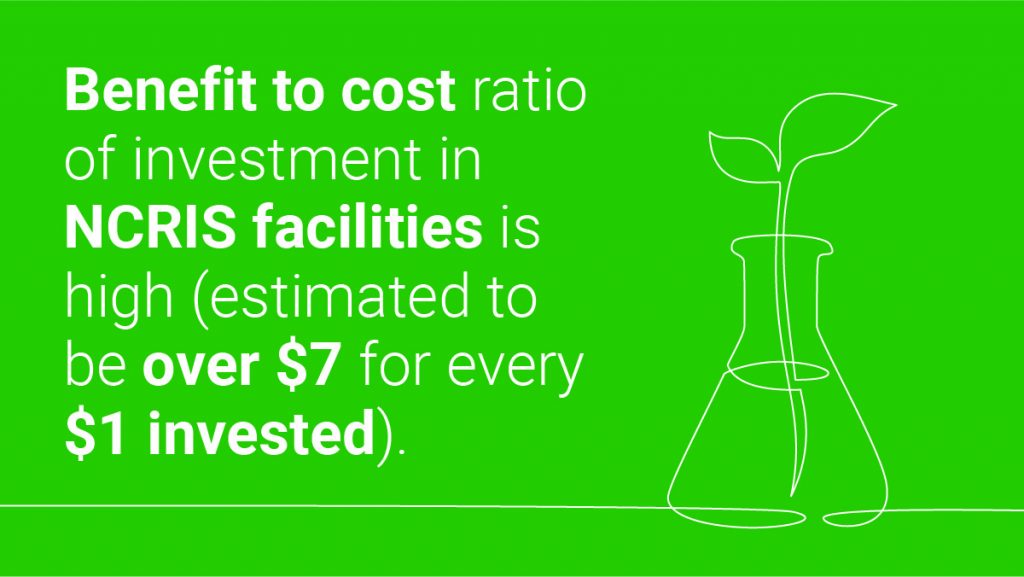
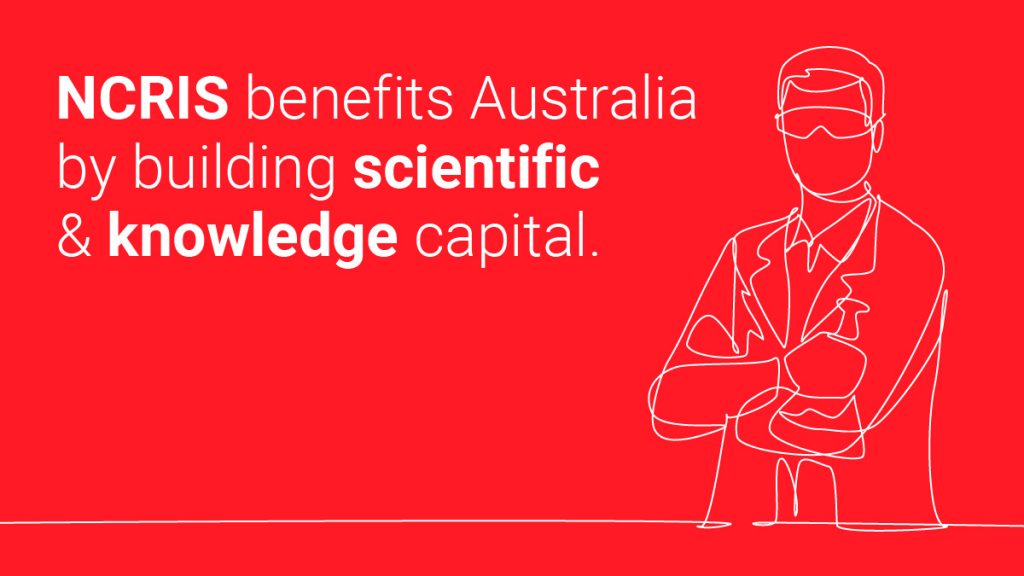
The Lateral Economics report noted that:
‘The economic impact analysis has revealed that NCRIS stimulus has contributed to supporting the economy during the GFC and the current COVID-19 pandemic.’
Dr Cathy Foley in her inaugural speech as Australia’s new Chief Scientist in March 2021 was perhaps thinking along similar lines when she noted that science is critical to solving humankind’s greatest challenges:
‘The question for me is how to strengthen the connections [between] scientists, researchers and innovators, with industry and policymakers.”— Dr Cathy Foley.
This question highlights the direction in which Australia’s science must head. NCRIS will be a key driver of this interdisciplinary and impact driven future.
IMPROVING HEALTH
NCRIS infrastructure is helping develop new cures for diseases and to identify epidemiological trends, through organisations such as Phenomics Australia, Population Health Research Network, and Therapeutic Innovation Australia.
ENABLING INTERNATIONAL COLLABORATIONS AND SCIENCE DIPLOMACY
NCRIS also provides opportunities for international engagement and cooperation, increasing the extent to which foreign researchers include Australia in their research. This generates better knowledge about Australia, and also unlocks flows of foreign investment in and collaboration with Australian research infrastructure.
Phenomics Australia’s active membership of the International Mouse Phenotyping Consortium, a world-wide alliance of 21 research institutions and organisations collaborating to fully describe mammalian gene function, with mutual benefits through harmonising experimental protocols and open sharing of highly-curated data.
AUTHORS
Philomena Manifold (AuScope), Jo Curkpatrick (Australian Plant Phenomics Facility) Romy Pearse (Astronomy Australia), Nicola Tew (Population Health Research Network), and Karina Nunez Machado (Pawsey) on behalf of the NCRIS Communications Network
MORE INFORMATION
If you would like to know more about this report, please contact Dr Merran Smith
(University of Western Australia).

